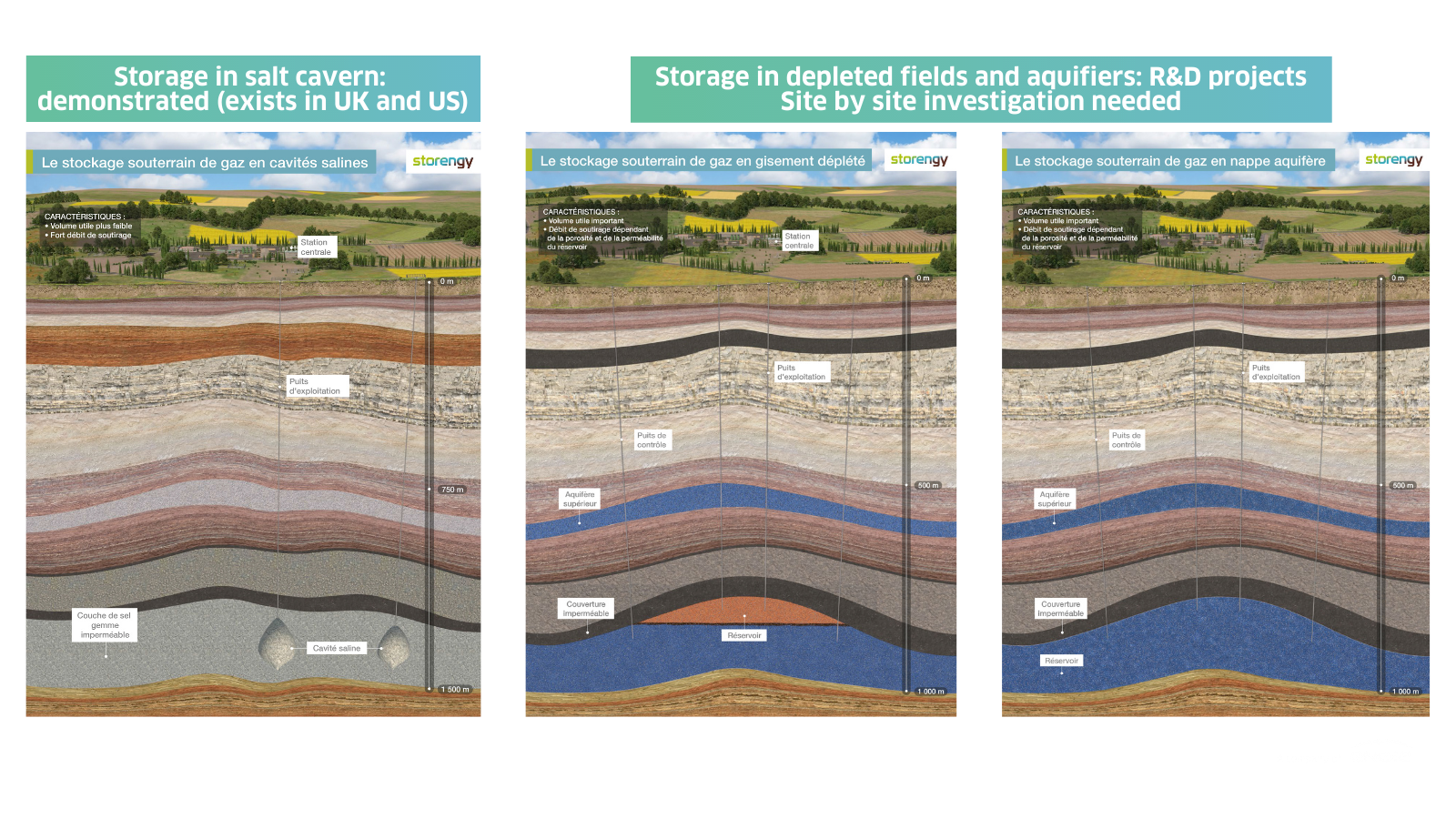Large scale hydrogen storage - the underground perspective
Our CEO Catherine Gras is talking about large scale hydrogen storage, drawing a parallel to natural gas storage.

In the next three editions of her monthly editorial Energy Spotlight, our CEO Catherine Gras, will be talking about large scale hydrogen storage, drawing a parallel to natural gas storage. Looking at it from three perspectives, this month it’s about the possibilities of underground storage:
There is a significant number of underground storage sites currently in operation in Europe, some for more than fifty years. In Germany only, more than 200 TWh of natural gas can be stored underground, amounting to roughly a third of the yearly gas consumption of the country. This is significant.
Natural gas is stored underground in three different types of reservoirs: salt caverns, aquifers and depleted fields, former oil and gas fields.
Underground storage of hydrogen is until now very limited: most storage facilities are rather small and above ground. There are two exceptions, in the UK and in the USA, we already have salt caverns storing pure hydrogen. This is the type of reservoir that will primarily be used as volumes of hydrogen begin to ramp up in Europe. The existing natural gas storage sites in salt layers can be used in the future to store hydrogen.
As regards depleted fields and aquifers, several research programs and pilot projects are currently being conducted. First indications are, that the capacity to store hydrogen will probably need to be analyzed on a site by site basis.
 The number of existing salt caverns in Europe, together with the potential to develop new ones, is already very significant compared to most hydrogen consumption scenarios for the coming decade. But not all countries are blessed with a good salt layer underground, the potential is mostly located in North-West-Europe. Being able to store hydrogen in other types of reservoirs might thus unlock potential for a strong rise in the role of hydrogen in South or Eastern Europe.
The number of existing salt caverns in Europe, together with the potential to develop new ones, is already very significant compared to most hydrogen consumption scenarios for the coming decade. But not all countries are blessed with a good salt layer underground, the potential is mostly located in North-West-Europe. Being able to store hydrogen in other types of reservoirs might thus unlock potential for a strong rise in the role of hydrogen in South or Eastern Europe.
From an underground perspective, a good parallel can be made. Salt caverns can be used for hydrogen and for the others more work will be needed to be conclusive.
This does not mean that the hydrogen storage of the future will be used and operated in the same way as most natural gas storage facilities are today. Some other aspects of the Hydrogen economy - upstream, midstream and downstream - will be different compared to what we have for natural gas, this is what I will cover in the next Energy Spotlight editions.

